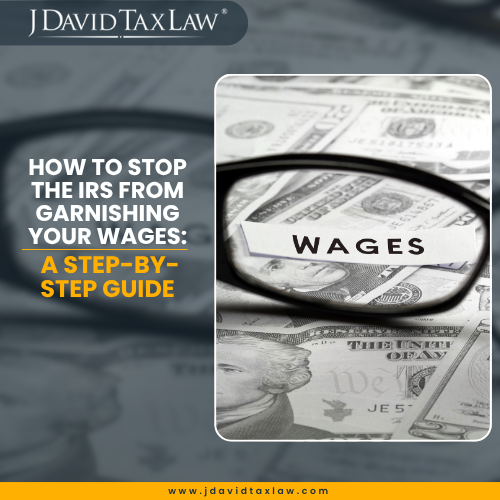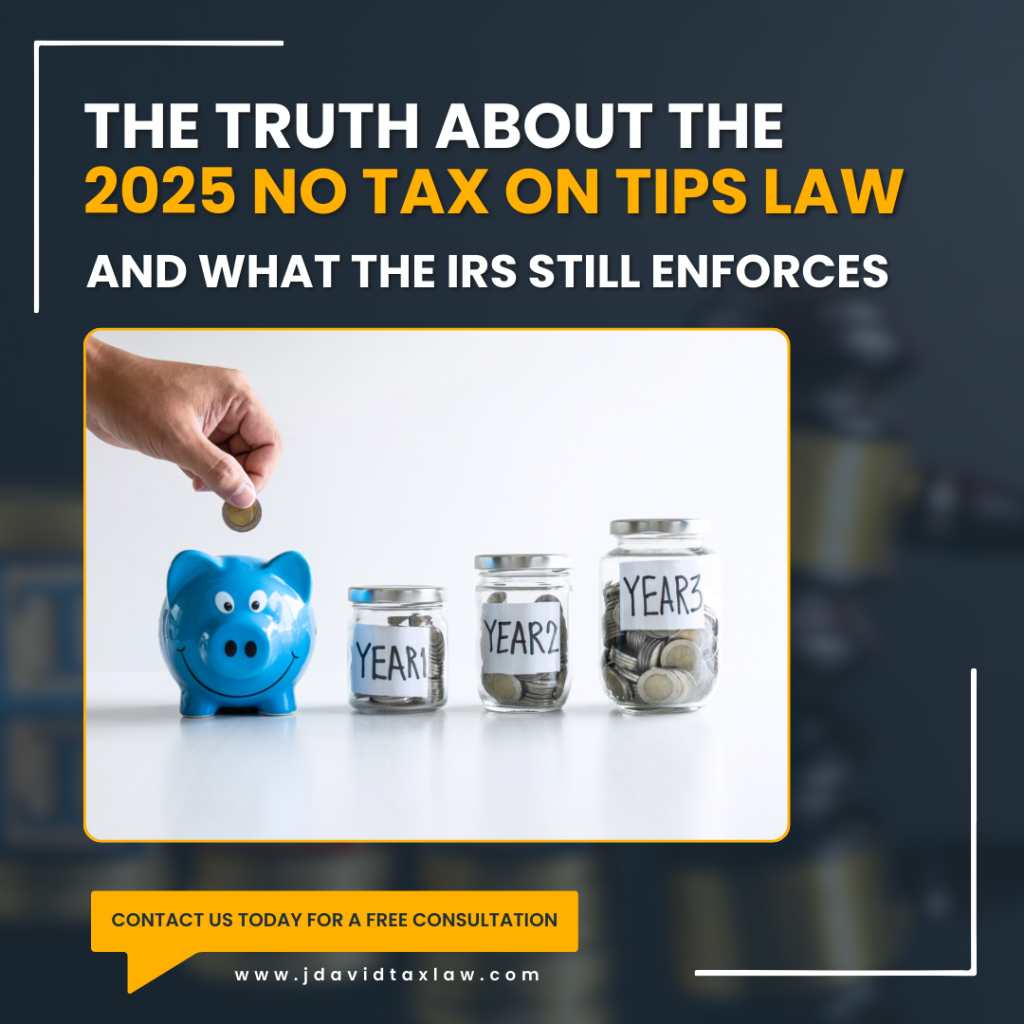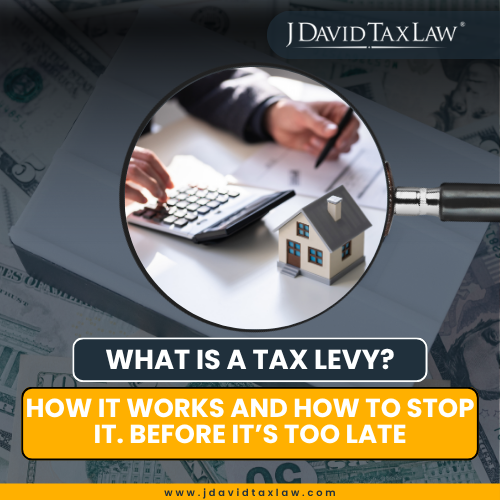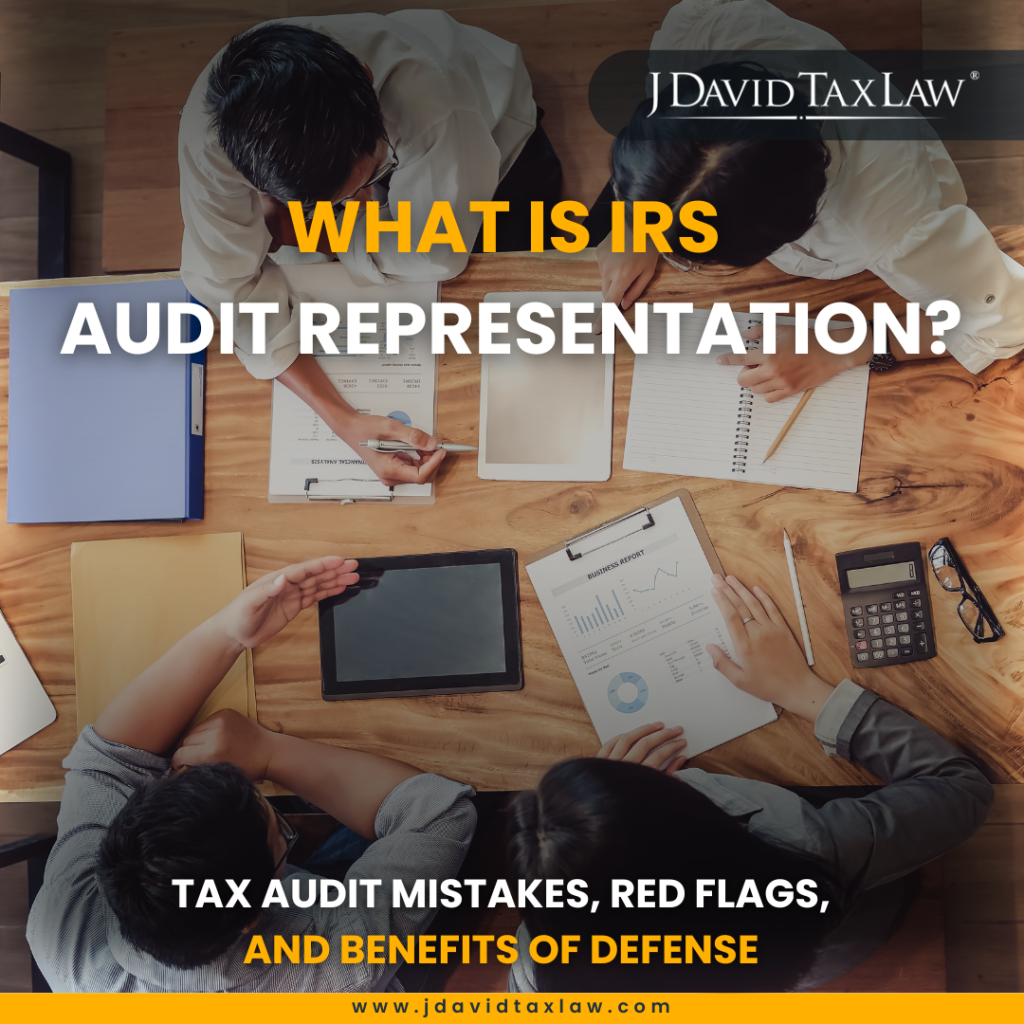If you’ve opened your paycheck and found it unexpectedly short, there’s a good chance the Internal Revenue Service (IRS) has started garnishing your wages. It’s a federal enforcement action that will go on for as long as (months or even years) you can fulfill your tax debt. So, you’re wondering how fast you can stop it, and curious about your options.
The truth is, the Internal Revenue Service won’t garnish your bank account overnight. It’s usually the final step in a longer process involving back taxes, ignored notices, and missed deadlines. But even if you’re already under garnishment, you still have rights and options.
This guide will walk you through each step to legally stop the garnishment, protect your paycheck, and get back on solid ground with the IRS. Whether you’ve just received a levy notice or already lost part of your income, it’ll equip you with the knowledge to expertly tackle the situation.
7 Steps to Stop The Internal Revenue Service (IRS) Garnishing Your Wages
Step 1: Confirm That Wage Garnishment Has Started
First, you need to confirm that the Internal Revenue Service officially issued a wage levy against you. Wage garnishment always starts with a formal, written notice rather than a phone call or an email.
IRS Letters Preceding Wage Garnishment
If you’ve received either of these and didn’t respond within 30 days, the Internal Revenue Service can begin collecting part of your wages. They notify your employer directly and require them to withhold a portion of your paycheck each pay period.
If you’re not sure whether garnishment has officially begun, check with your employer’s payroll department. They are required by law to comply with IRS levy orders and can confirm if such an order is in place.
Why this step matters:
If you’re still within the 30-day window after receiving the Final Notice, you can pause the garnishment before it starts by requesting a hearing. But if garnishment has already started, you’ll need to act quickly using one of the legal resolution methods.
Step 2: Check If You’re Within the 30-Day Window
As established, the Internal Revenue Service must give you at least 30 days’ notice before it starts garnishing your wages. This window begins the day you receive the Final Notice of Intent to Levy and Your Right to a Hearing, which are typically labeled as Letter 1058 or LT11.
If you’re still within the 30 days, you have a critical opportunity to stop the garnishment by filing a Collection Due Process (CDP) hearing request using Form 12153.
Submitting this form does two things:
Temporarily halts the garnishment process while your case is under review.
Gives you the chance to propose a resolution, such as an installment agreement, offer in compromise, or hardship status.
Timing is everything here. If you miss the 30-day window, you lose your legal right to request a CDP hearing, and the IRS can begin taking your wages without further delay. That’s why it’s important to check the date on your Final Notice and act fast.
If you’re unsure about the deadline or the status of your case, this is the point where speaking to a tax attorney or certified public accountant can help ensure you don’t miss a legal window that could protect your income.
The IRS is Forgiving Millions Each Day. You Could Be Next.
Benefits of the IRS Fresh Start Initiative
-
Prevention of Tax Liens: The initiative can help qualifying taxpayers avoid the IRS filing a tax lien against them, reducing the risk of property or asset claims.
-
Removal of Existing Tax Liens: In certain cases, the IRS may remove a tax lien that has already been placed, giving taxpayers a fresh financial start.
-
Reduction of Penalties and Interest: The program offers opportunities for reduced penalties and waived interest on tax debts, easing the overall financial burden.
-
Flexible Payment Options: Taxpayers may be granted extended time to pay their debts, with manageable installment plans and fewer financial penalties.
-
Simplified Qualification Requirements: For some taxpayers, the program may eliminate the need to disclose income or assets to the IRS, making it easier to qualify for an affordable installment agreement.
IRS Fresh Start Program Requirements: Who Qualifies?
Eligibility for the Fresh Start Program depends on several factors, including the amount of tax debt owed, income level, and ability to make payments. This initiative is part of the broader tax relief programs offered by the IRS to help struggling taxpayers regain financial stability. Below are the key qualification requirements explained in detail.
1. Tax Debt Amount
Taxpayers must owe $50,000 or less in tax debt to be eligible for a streamlined installment agreement. If your tax debt exceeds this amount, you may still qualify by making a partial payment to reduce the balance to meet the threshold. Keeping your debt within this limit increases your chances of being approved for more flexible repayment terms.
2. Financial Hardship
Taxpayers seeking relief through this program must demonstrate economic hardship, proving that paying their tax debt in full would cause significant financial strain. The IRS requires applicants to submit financial records, including income, expenses, and asset documentation, to assess their ability to pay. This ensures that the program is reserved for individuals who genuinely need tax debt relief due to financial challenges.
3. Compliance with Tax Filings
To be eligible for the Fresh Start, you must be current on all tax filings. If you have any unfiled tax returns, they must be submitted before you can apply for relief. The IRS prioritizes taxpayers who are willing to comply with their tax obligations moving forward. Ensuring all filings are up to date not only makes you eligible but also prevents further penalties and enforcement actions.
4. Payment History
A taxpayer’s payment history plays an important role in determining eligibility for this clean start initiative. Those who enter into an installment agreement or an Offer in Compromise (OIC) must make timely payments to maintain their eligibility. Missing or delaying payments could result in the termination of relief benefits, leading to renewed IRS collection actions such as liens or levies.
5. Self-Employed Income Decline
For self-employed individuals, proving a 25% or more decline in income may help in qualifying for additional tax relief programs such as penalty reduction or an adjusted repayment plan. This provision is designed to assist business owners who have experienced financial setbacks and need flexibility in repaying their tax obligations. Demonstrating income loss through financial statements or tax returns is essential for approval under this criterion.
Not sure if you meet the criteria? J. David Tax Law can clarify your eligibility and lead you toward a solution that fits your unique circumstances.
When Should You Apply for the IRS Fresh Start?
The best time to apply for the Fresh Start Program is when you recognize that your tax debt is becoming unmanageable. It’s smart to act if:
-
You owe $50,000 or less in total tax debt (including penalties and interest).
-
Your income has declined significantly, impacting your ability to pay.
-
You’re behind on payments but want to avoid liens, levies, or wage garnishment.
-
You’re looking to prevent aggressive IRS collection actions and take control of your finances.
Five Primary Relief Solutions Under Fresh Start Program
The IRS Fresh Start Program offers a variety of relief options to help taxpayers manage and resolve their tax debts more effectively. Below are the five primary relief solutions available under the Fresh Start Program, each designed to meet different financial circumstances and levels of hardship.
-
Installment Agreements
An arrangement that allows taxpayers to pay their tax debt in manageable monthly installments.
Types of Installment Agreements:
-
Guaranteed Installment Agreement: For debts of $10,000 or less, with a repayment period of up to three years.
-
Streamlined Installment Agreement: For debts up to $50,000, offering simplified processing and repayment terms.
-
Partial Payment Installment Agreement: Allows repayment of a portion of the debt based on ability to pay.
-
Non-Streamlined Installment Agreement: For higher debts, requiring detailed financial disclosure and IRS approval.
-
Offer in Compromise (OIC)
The Offer in Compromise is a settlement option that allows eligible taxpayers to pay less than the total amount of tax debt owed. The IRS considers factors such as income, expenses, assets, and the taxpayer’s ability to pay before accepting an offer. While this option can provide significant relief, it requires substantial documentation to prove financial hardship.
At J. David Tax Law, we helped a client settle $11,000 of state tax debt for just $200 through a strategic hardship submission. Contact us today to explore your Fresh Start options.
-
Currently Non-Collectible (CNC) Status
Currently Non-Collectible status provides temporary relief for taxpayers who can demonstrate that paying their tax debt would cause significant financial hardship. When granted, the IRS halts collection efforts, including wage garnishments and levies, but interest and penalties continue to accrue on the outstanding balance.
This status is reviewed periodically, and if the taxpayer’s financial situation improves, collection efforts may resume. CNC status offers an opportunity to regain financial stability while addressing long-term tax obligations.
-
Penalty Abatement
Penalty abatement allows taxpayers to reduce or eliminate certain penalties, such as those for late filing or late payments. The IRS offers first-time penalty abatement for taxpayers with a history of compliance and reasonable cause abatement for those who can provide documentation of financial or personal hardship.
We know what a difference this can make. Just recently, our tax lawyers helped a client in Louisiana who was overwhelmed by over $150,000 in penalties and interest. After multiple rejections, we didn’t give up—instead, we fought to escalate his case and ultimately secured a full waiver of those crushing debts.
-
Tax Lien Withdrawal
Tax lien withdrawal removes a federal tax lien from public records, improving the taxpayer’s credit and financial standing. This option is available to taxpayers who enter into a Direct Debit Installment Agreement for debts of $25,000 or less and make at least three consecutive payments. Withdrawal not only clears the lien from public view but also demonstrates to lenders and creditors that the taxpayer is resolving their tax obligations.
Interest and penalties continue to accrue until the balance is fully paid. Professional representation can assist in ensuring all requirements are met for successful lien withdrawal.
How to apply for the IRS Fresh Start Program 2025
Applying for the Fresh Start is one of the most effective ways to engage with a federal tax relief program that’s designed to help taxpayers regain financial control. Whether you’re facing penalties, back taxes, or aggressive collection actions, the program provides structured options to help you lower IRS debt in a manageable way. Here’s how to take the first step toward meaningful tax relief help.
Ensure You’re in Compliance
Before applying, make sure all required tax returns are filed. The IRS will not consider your application if you have any outstanding unfiled returns.
Determine Which Relief Option Fits Your Situation
Identify whether you qualify for an Installment Agreement, Offer in Compromise, Currently Non-Collectible status, Penalty Abatement, or Tax Lien Withdrawal. Each option has different criteria based on your income, assets, and debt level.
Gather Financial Documentation
Prepare detailed financial records including income statements, expense reports, bank statements, and asset information. If you’re applying for an OIC or hardship-based relief, this documentation is critical to show your inability to pay.
Complete and Submit the Appropriate IRS Forms
Depending on your relief type, you may need one or more of the following:
-
Form 9465 – Installment Agreement Request
-
Form 433-A (OIC) – Collection Information Statement
-
Form 656 – Offer in Compromise
-
Form 843 – Penalty Abatement Requests
Consider Professional Representation
Dealing with the IRS isn’t always straightforward, and one wrong move can slow down or derail your progress. Working with a tax attorney or licensed professional can increase your chances of approval and ensure your application is submitted correctly.
Follow Up and Stay Current
Once submitted, monitor your application status and continue to stay compliant with future tax filings and payments. Falling behind may disqualify you from program benefits.
What is the duration of the IRS Fresh Start Initiative?
The IRS Fresh Start Initiative does not have a fixed expiration date—it’s an ongoing set of programs available to eligible taxpayers. However, the duration of your relief depends entirely on the option you pursue. For example, Installment Agreements can last up to 72 months (6 years), depending on the amount owed and your ability to pay. Offers in Compromise typically have shorter timelines and can resolve debt within months once approved. In contrast, Currently Non-Collectible (CNC) status offers temporary relief and is subject to periodic IRS review.
In short, while the Fresh Start Initiative itself remains available, the timeline of your specific tax relief will vary based on your financial situation and the resolution method that applies.
Frequently Asked Questions About How To Stop Wage Garnishment
You can stop wage garnishment by resolving with the IRS. This might include setting up a payment plan, proving financial hardship, or submitting an Offer in Compromise. But the process isn’t automatic — you must take formal action to trigger a release. Many people turn to experienced tax attorneys, like those at J. David Tax Law, to help file the right paperwork, negotiate directly with the IRS, and stop the garnishment as quickly as possible.
Yes, but not in the same way the IRS can. For credit card debt, a lender must first sue you in civil court and win a judgment before it can garnish your wages. This process takes time and includes multiple legal steps, including notifying you and giving you a chance to respond.
Speed matters because your timing determines your options. If you’re within 30 days of receiving the IRS Final Notice, you may be able to file a Collection Due Process (CDP) hearing request, which puts garnishment on hold. If that window has closed, submitting a resolution and requesting a levy release is the next best step. J. David’s attorneys regularly handle urgent tax cases, often securing relief in days, not weeks.
The IRS follows a standardized formula based on your filing status and number of dependents. Anything above the exempt amount can be taken, often leaving taxpayers with barely enough to cover basic needs. Unlike private creditors, the IRS doesn’t need court approval and can garnish your wages continuously until the debt is paid or resolved.




















